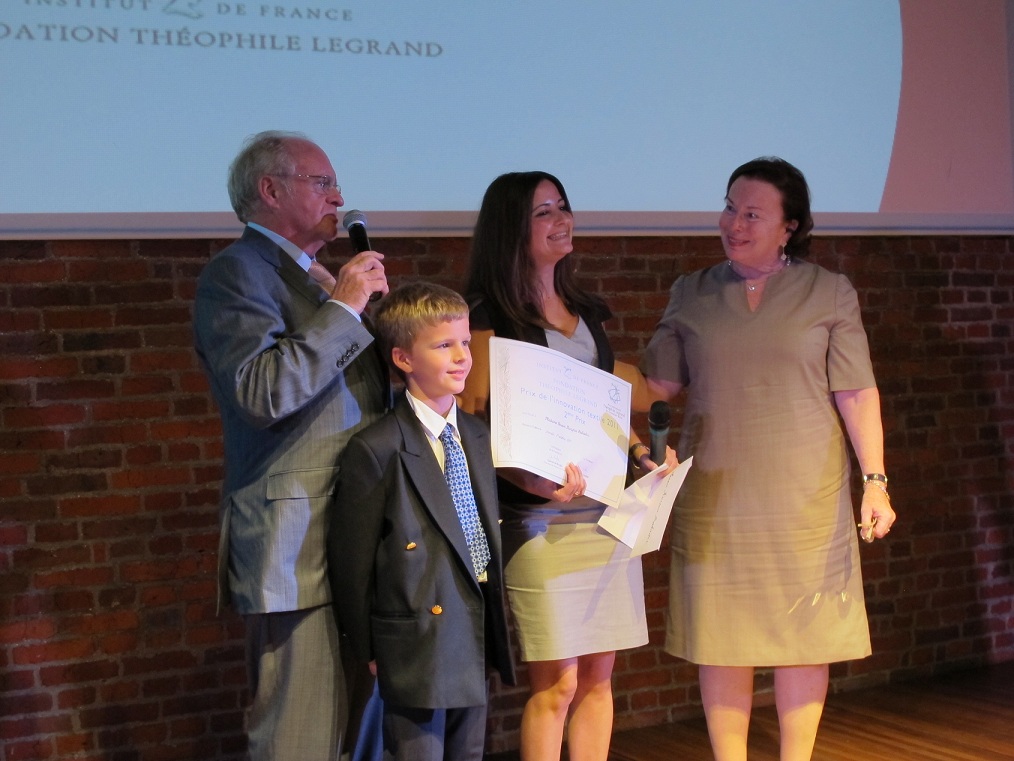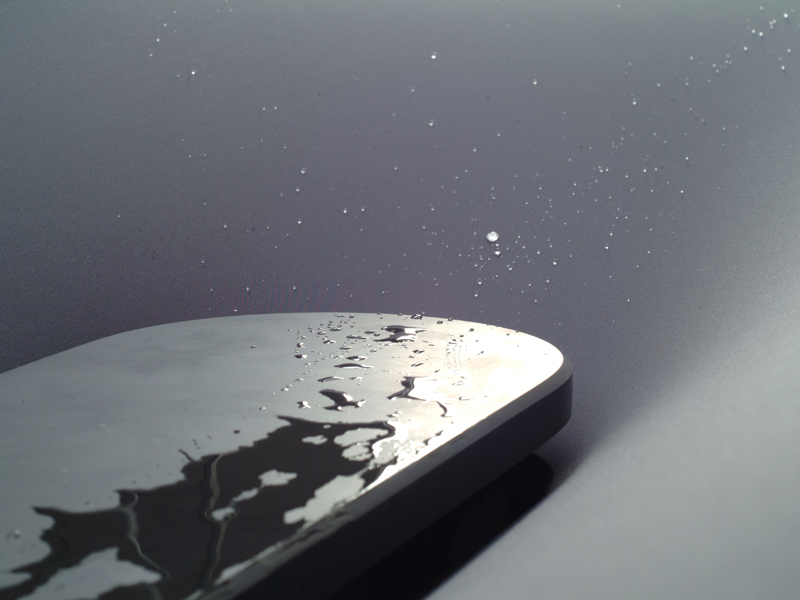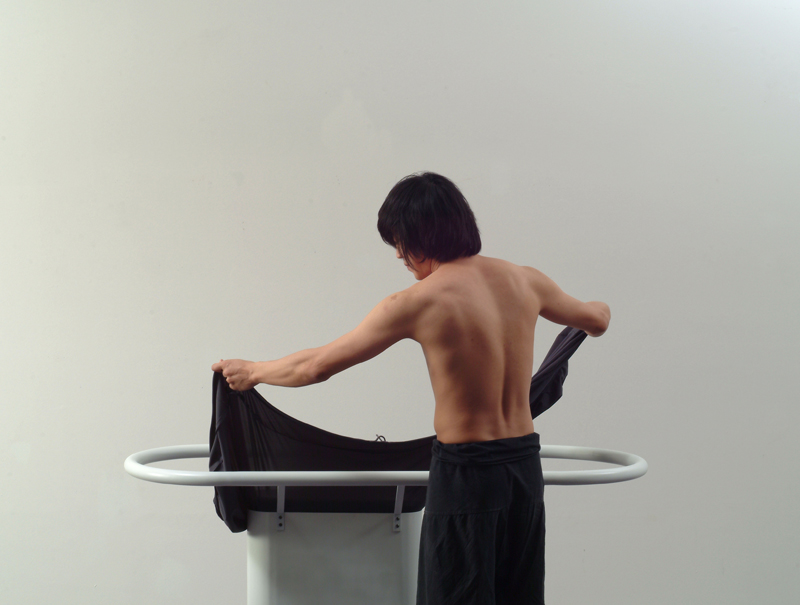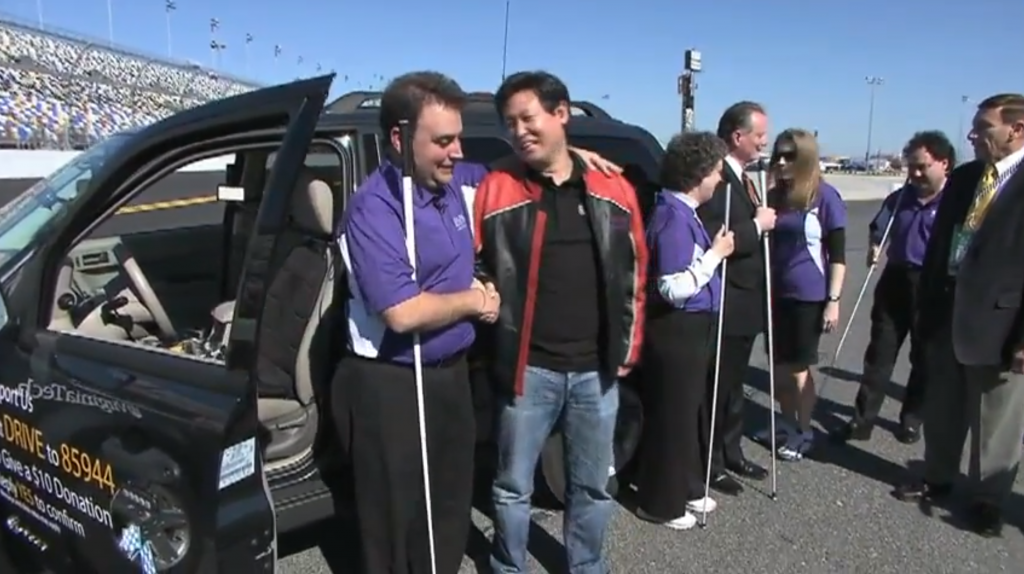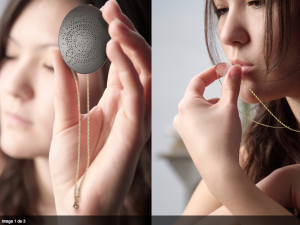Tentative d’une cartographie des notions associées au repas. Ajoutez, critiquez, commentez !
Interview de Céline Mazard
Retranscription de l’interview d’une personne atteinte d’une rétinite pigmentaire depuis son enfance, ayant maintenant atteint la cécité. Par Marie et Jérémy
Safely Dangerous Kitchen
Designer: Jonathan Ben-Tovim
Project Name: Safely Dangerous Kitchen (above)
Project text English: From toothbrushes to missile defence systems, the industry of safety has become a global obsession. A visit to any modern airport will reveal the desperate lengths we go to in creating the illusion of safety. However, there seems to be little scrutiny of the vast sums of money and time spent on the safety industry. Perhaps its time to ask; does safety really make us safer? This question was the basis of my investigation into the safety measures we take, and the human factors that drive these decisions.
Much of my investigation was spent on understanding the psychological factors behind safety such as risk perception, and our basic attraction to danger. Ultimately I wanted to pose the question: Do we always need safety, or is a little bit of danger just as safe? The material response to this research comes in the form of the Safely Dangerous Kitchen; a series of kitchen appliances that confront the user with certain safety ‘myths’ that are associated with specific products. A whole kitchen environment was created with the aim of finding the border between danger and attraction.
textile détecteur d’obstacles
2ème Prix 2011 : Senen Kurşun Bahadir et son « textile détecteur d’obstacles »
Doctorante originaire de Turquie à l’ENSAIT-GEMTEX de Roubaix et à l’ITU Textile Technologies and Design Faculty d’Istanbul en Turquie, Senen Kurşun Bahadir a inventé un système de détection d’obstacles portable entièrement intégré à des structures textiles pour des personnes malvoyantes. Ces textiles pourraient être développés dans les secteurs militaires, sportifs ou dans le milieu médical. Ces nouveaux textiles permettent de créer une gamme de vêtements interactifs, électroniques et intelligents. Plusieurs tests ont été effectués avec succès.
Textiles dans la salle de bain, et pourquoi pas dans la cuisine ?
Projet de diplôme : Une autre salle de bain
« Figée, la salle de bain semble aujourd’hui être l’endroit privilégié pour construire un projet. Si Alfred Hitchcock a choisi cet espace pour le meurtre de sa protagoniste, Marion Crane, dans Psychose, c’est qu’en réalité, c’est un endroit mystérieux, terrifiant, où miasmes et détergents se mélangent. Humide, d’une blancheur suspecte, la salle de bain féconde l’univers microscopique et incarne notre abattoir domestique, car c’est avant tout la scène d’un crime. Pas de coupable, pas une trace, juste quelques flaques d’eau. C’est un rituel quotidien, un bal de la mort déguisée, codifiée, détournée. C’est le prix à payer pour rester propre ».
Espace restreint ou démesuré, espace rituel ou fantasmagorique, la salle de bain est une architecture prisonnière du mobilier qui l’habille, fixée de manière définitive
par la plomberie. Alors quelle nouvelle forme donner à ce lieu de bien-être et quels matériaux utiliser ?
EAT is ART
http://www.publicisdrugstore.com/
Beau Lotto: Optical illusions show how we see
TED Video
Dennis Hong video making a car for blind drivers
Canne blanche & techno
A « Smart » white long cane for the blind which incorporates GPS technology as well as ultrasonic sensors to detect nearby objects.
The device will have essentially the same structure as current white long canes however will have GPS technology as well as ultrasonic sensors built into the cane.
The GPS technology will be operated through voice commands given to the cane where the user will be able to input what address he/she wishes to go to. Alternatively, if voice commands cannot be understood by the device (possibly due to the user unable to speak the language, or due to a thick accent) a miniature keypad will be located on the device which can be used instead to input the instructions. In addition, the GPS functionality will allow the guide stick to « remember » certain locations and the way in which the user reached the destination as well as allowing the user to input points of interest at the location. The « Smart » cane will relay information to a bluetooth headset worn by the user giving information in regards to what direction to travel, for how many metres, etc
Three ultrasonic sensors will be located at the bottom of the cane each separated by 60 degree angles providing a 180 degree field of vision. When an object approaches the cane, the handle of the cane will vibrate notifying the user of an incoming object. If for example the user was approaching an object to the left of the user, the left side of the handle will vibrate, if on the right, the right side of the handle will vibrate, and if infront, the top of the handle will vibrate.
We are also considering incorporating a text-to-speech reader on the device which can be detached from the stick and used to read documents, restaurant menus, etc. The speech will be fed directly into the bluetooth headset, much in the same way spoken instructions from the GPS are relayed to the bluetooth headset.
le lien
http://www.ted.com/conversations/11196/a_smart_white_long_cane_for.html
Projets pour mal voyants de l’école
Bernard Moise » objet de l’ombre » une série de projets pour les non et mal voyants très variés.
http://www.ensci.com/createur-industriel/ateliers-de-projets/b-moise/projet/article/4150/
Un projet de diplome 2010 de Claire Lavenir » defaire l’évidence des choses »
http://www.ensci.com/createur-industriel/presentation/diplome/themes-des-memoires-et-diplomes/article/7373/
Un autre projet de diplome 2004 de Valentin Monfort »Au bout des doigts. Une cuisine pour aveugles »
http://www.ensci.com/createur-industriel/presentation/diplome/themes-des-memoires-et-diplomes/article/3899/
Et puis il y a également Tatiana Hossein et Jonathan Deloy qui l’année dernière ont travaillés sur une salle de bain pour non voyants. Le projet est encore confidentiel mais vous pouvez leur poser des questions !


